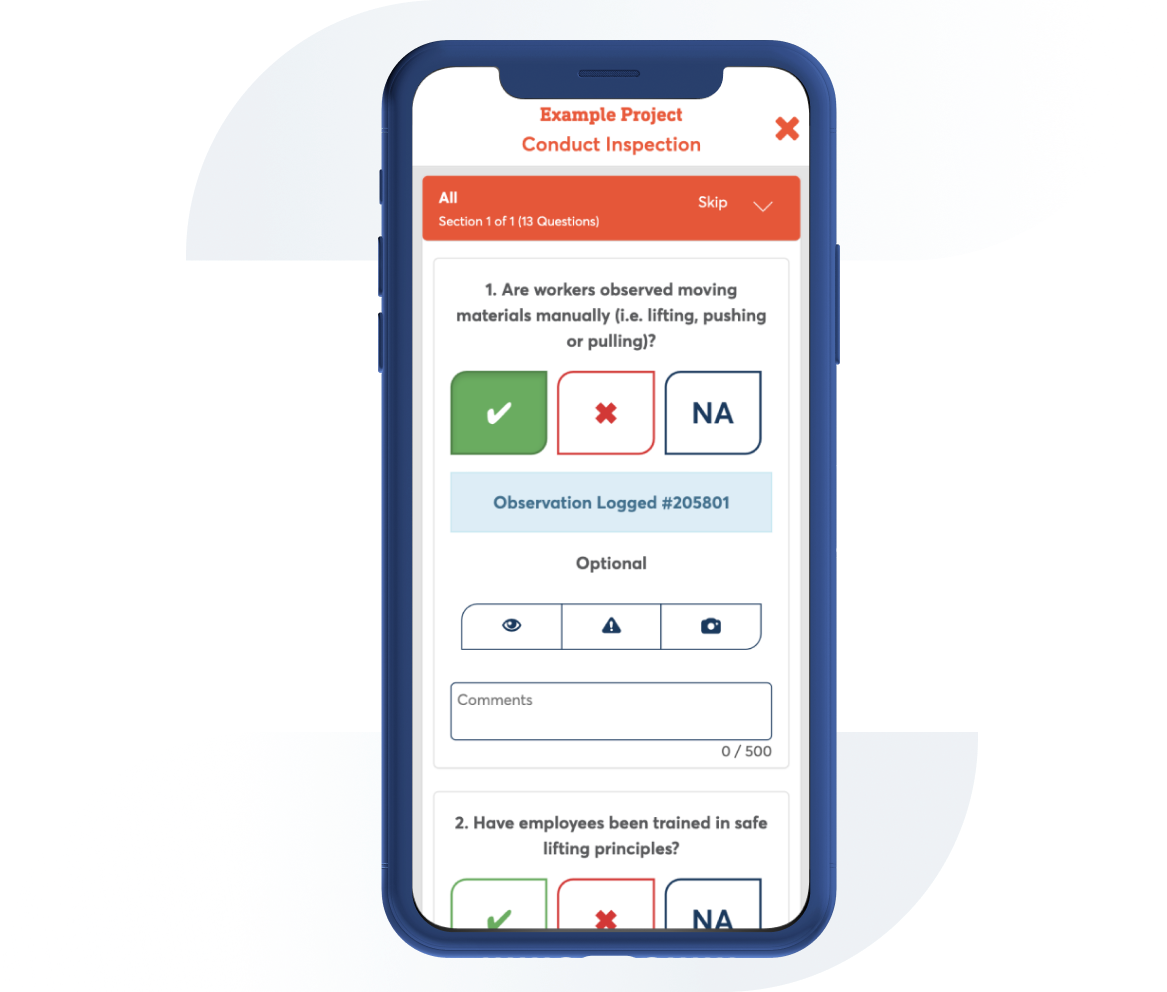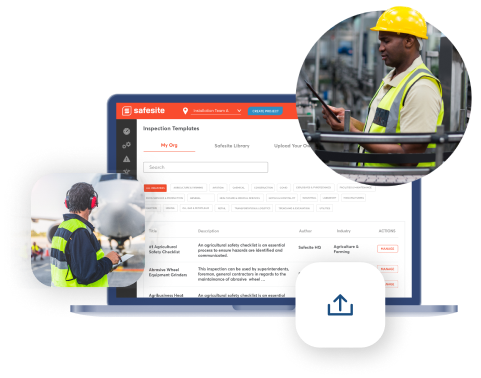General Safety Walk Audit
Contributor: Safesite Jurisdiction: OSHA
This checklist is for walk throughs of general indoor/outdoor work areas to identify workplace hazards related to emergency, electrical, facilities safety & more, edit accordingly for daily walks.

Template Preview
1. Are emergency exits and passageways free from obstruction?
Actions
2. Are work areas and walkways free from slip, trip and fall hazards?
Actions
3. Is the general appearance neat, tidy and organized?
Actions
4. Does ventilation and noise control appear to be adequate?
Actions
5. Is lighting adequate for area?
Actions
6. Is signage, OSHA logs, evacuation route maps, etc. displayed and up to date?
Actions
1. Are there adequate fire extinguishers in the area for classified hazards?
Actions
2. Have fire extinguishers had an annual inspection and a documented inspection within the last 30 days?
Actions
3. Are areas around fire extinguishers, riser rooms and standpipes free from obstruction?
Actions
4. Are sprinkler heads free from obstructions for at least 18 inches?
Actions
5. Is the fire suppression system green tagged and has it been inspected within the last 12 months?
Actions
6. Are flammables and combustibles properly stored in accordance with OSHA and NFPA requirements?
Actions
7. Are oxygen and fuel gas cylinders stored upright, secured and with caps in place and kept separated by at least 20 feet or a fireproof barrier?
Actions
8. Are propane cylinders stored correctly?
Actions
9. Are flammable fuel areas labeled as flammable, no smoking?
Actions
10. Is hot work being performed in accordance with Hot Work permit requirements and all flammable and combustible materials protected?
Actions
11. Has an annual fire drill been conducted and documented?
Actions
1. Are proper tools being used for tasks being performed and being used correctly?
Actions
2. Is appropriate guarding in place and adjusted properly?
Actions
3. Are tools in good condition and homemade/modified tools prohibited?
Actions
4. Are extension cords in good condition and adequate for the tool being used?
Actions
5. Is appropriate grounding in place?
Actions
6. Are fixed tools properly anchored?
Actions
7. Has proper training been conducted with employees on safe use?
Actions
1. Are floor and wall openings protected?
Actions
2. Are proper barricades under work areas where work is being performed overhead?
Actions
1. Are work areas and passageways clear?
Actions
2. Is clean drinking water provided?
Actions
3. Are empty waste containers available?
Actions
4. Are tools and materials properly stored?
Actions
5. Are hoses, welding leads and cords organized in a manner as not to create a tripping hazard?
Actions
6. Are bathrooms and break rooms on a sanitization schedule?
Actions
1. Are safety toed boots being worn?
Actions
2. Are safety glasses being worn at all times?
Actions
3. Is hearing protection being worn?
Actions
4. Is face protection being worn while grinding, chipping, cutting, welding, etc.?
Actions
5. Are proper gloves being worn?
Actions
6. Is respiratory protection being worn?
Actions
7. Have harnesses and lanyards had a documented inspection?
Actions
1. Are all operators trained & certified?
Actions
2. Have pre-shift inspections been conducted?
Actions
3. Are operators wearing seatbelts during operation?
Actions
4. Are horns being used when entering/exiting a building and reversing?
Actions
5. Is appropriate PPE being worn while in use and while refueling?
Actions
6. Are forklifts being left unattended?
Actions
1. Are eyewash stations adequate and been inspected weekly if plumbed and every 30 days if self contained?
Actions
2. Are first aid cabinets stocked and adequate?
Actions
3. Are there adequate AEDs in the area?
Actions
4. Are first responders available?
Actions
5. Have first aid cabinets and AEDs been inspected within the last 30 days and no expired items found?
Actions
6. Are eyewash stations, first aid cabinets and AEDs kept clear at all times?
Actions
7. Are emergency numbers and directions posted?
Actions
1. Have cranes and rigging been inspected in the last 30 days and annually by a third party?
Actions
2. Are slings and rigging in good condition?
Actions
3. Are cranes rigged correctly and being used safely?
Actions
4. Have crane operators and riggers been certified?
Actions
1. Are safety data sheets up to date and readily available to employees?
Actions
2. Are chemicals properly labeled in accordance with Globally Harmonized System requirements?
Actions
3. Are flammables and combustibles properly stored?
Actions
4. Are chemicals in appropriate secondary containment and storage location?
Actions
5. Are flammable storage areas and transfer stations appropriately bonded and grounded?
Actions
6. Are chemicals being disposed of properly?
Actions
7. Write Comments or Remarks here:

Can't find what you are looking for?
